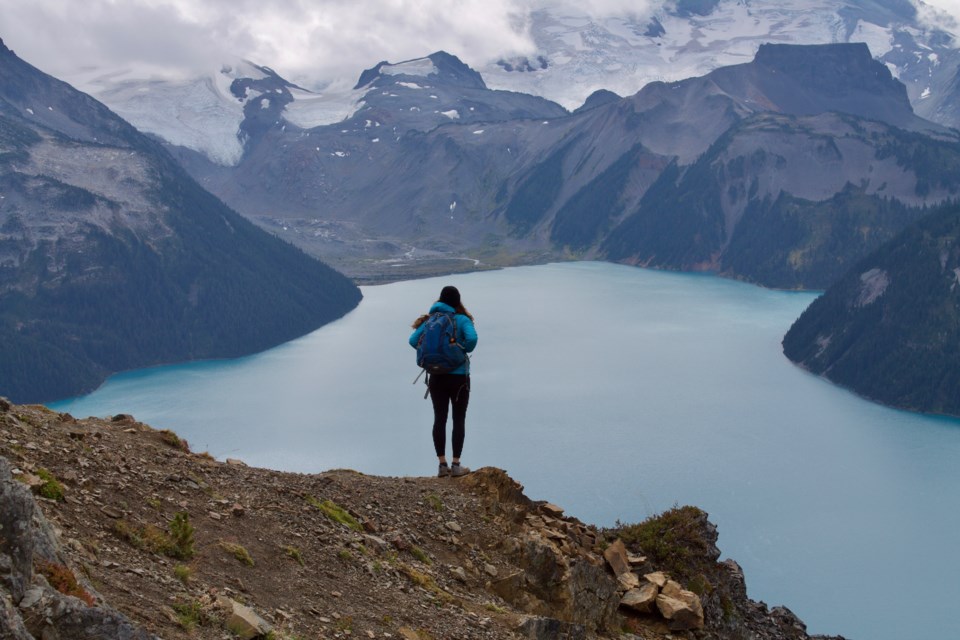I was mindlessly scrolling through Instagram the other day when yet another video popped up of a person perched on the edge of Trolltunga in Norway.
If you follow any outdoor accounts you’ve undoubtedly seen this image, whether you recognize the name of the picturesque cliff or not. In fact, go ahead and Google image search it right now. You will see dozens and dozens of the exact same—though admittedly jaw-
dropping—image.
With so many people making the trek, I wondered if this hike was simply a lookout near a parking lot, a full-day hike or somewhere in between.
Turns out, from the main trailhead, it’s 27 kilometres long and about 800 metres in elevation (and the government of Norway wants you to be prepared for that, as outlined on visitnorway.com). I suppose those people are earning their sometimes-slightly-risky pictures.
I’ve seen images of this place a million times, and yet every time I still think, “Wow, it would be cool to see this in person.”
A new(ish) study highlighted in Backpacker magazine earlier this month concludes what we’ve long suspected: social media images are driving people to the photogenic places they showcase.
“The Associations Between Visitation, Social Media Use, and Search and Rescue in United States National Parks,” published in Wilderness & Environmental Medicine, used 2017 visitor use statistics from the U.S. National Park Service, a search and rescue (SAR) incident dashboard, and an app from the University of California, Irvine called Cloudberry, which collects Twitter posts and sorts them by keywords, hashtags and geographic information.
While the data was based on American National Parks, it’s not a stretch to think the conclusions are applicable in Canada—or anywhere else with tantalizing backcountry, for that matter.
Some of the study’s conclusions border on “duh” levels of obvious; more recreational visitors meant higher calls to SAR, for example. However, it also found that both frontcountry and backcountry visits caused a similar spike in SAR calls. Backcountry visits, however, had a stronger correlation with fatalities.
But arguably the most interesting part of the study—which, for some reason, only looked at Twitter rather than photo- or video-based social media—concluded that tweets are correlated with SAR incidents, visits, and fatalities.
We might have guessed this to be true, and now the data confirms it.
“Regarding public safety, the strongest correlation in our study was between tweets and SAR incidents,” the report said. “There are likely several mediators that contribute to this association, such as an increased number of visitors posting to social media and increased visitation overall being related to SAR incidents, as identified in our study. However, we suggest that social media may be associated with SAR incidents via users motivating others to obtain photos or videos through risky or dangerous means. Existing studies have demonstrated the dangers associated with social media-influenced trends in the outdoors.”
While the study doesn’t go into details about how, exactly, social media users are motivating each other to get the shot, that likely just means seeing the pic makes you want to get the pic.
It also references previous studies of a similar nature. One, for example, looked at photo-taking behaviours at sites where people were injured. The most common feature: cliffs.
“[T]he most preferred site of photography was on cliff edges, and the most frequently reported injury was falling from heights,” it read.
Now, before you nominate these people for the Darwin Awards, really think about it. If you were to visit Trolltunga, would you not get a photo of your own? (I already hear a lot of you saying you’d skip such a tourist trap, so insert your lesser-known cliff here.)
Sure you would—whether it was for social media or just remained on your camera roll. Would you dangle your legs off the end, creating the illusion heights don’t bother you one bit? Maybe not.
Perhaps the takeaway from the study is twofold: we need to be responsible about how we showcase our favourite backcountry spots in the Sea to Sky—and be mindful of where we’re standing when we get the shot.
There’s data to backup the fact that we’re not always great at that.




